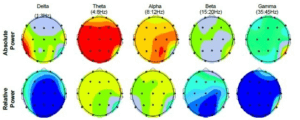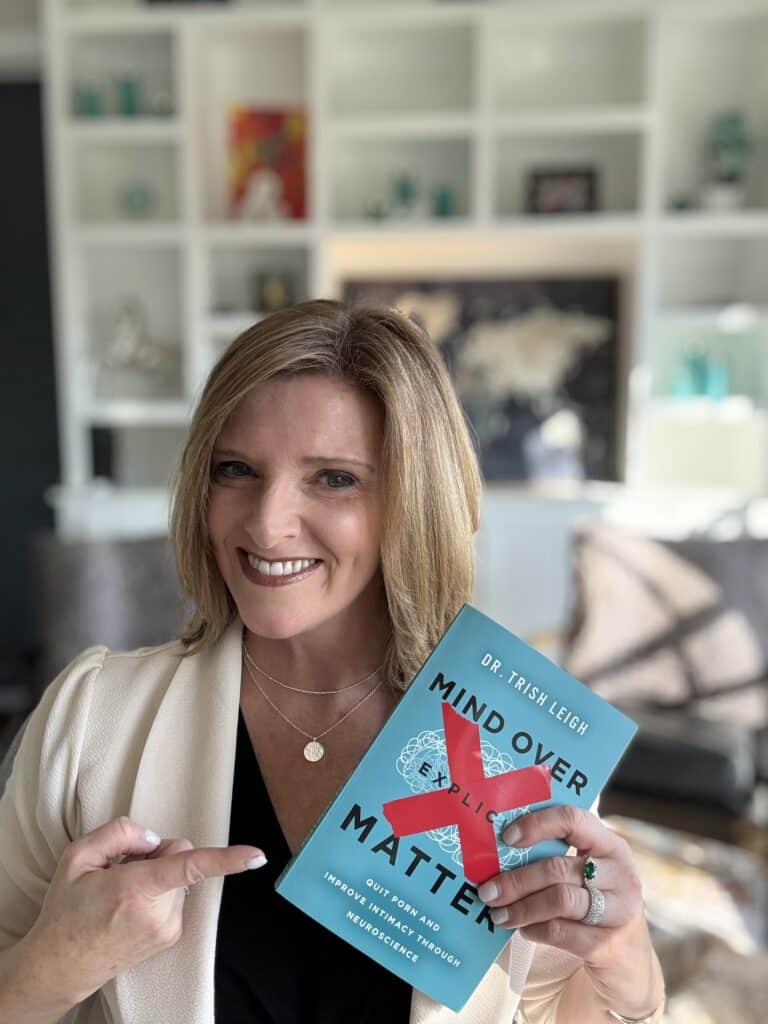If you have had a restless night lately, then you know that anxiety affects sleep. What most people do not know is that anxiety is a neurological brain pattern. This means that the way your brain is using electrical energy impacts how you feel and perform. Continue reading to learn more about how does anxiety affect sleep.
In the video below, I am going to talk about the brain pattern that is behind stress and anxiety this pattern creates anxiety and perpetuates it too. Then I will show you the sleep cycle and how it unfolds throughout the night. I will specifically talk about how it impacts your brain functioning speeds. I’m also going to show you how anxiety impacts the sleep cycle and messes with it making it difficult for you to get a great night’s sleep. Watch the video now.
Anxiety Brain Map
On the qEEg Brain Map diagram, you can see that your brain has five main speeds. They are supposed to be used seamlessly throughout the day and night. This helps you get into all the states that we need to get into throughout the day such as alertness focus. On the qEEG brain map, when a brain is green it means that those brain speeds are being used optimally. When we see blue or red and yellow that means that those speeds are not being used optimally. Therefore, when we see red and yellow that’s too much of a speed. When it is blue it’s too little of a speed.

So what does it mean when you see this anxiety pattern on your qEEG Brain Map? It means that the brain is using excessive High Beta extra fast processing speed. Anxiety, overdrive, and stress modes occur as a result.
If you struggle with anxiety, it is likely that you use a tremendous amount of neural energy to appear like you are not anxious too. However, when you self-regulate in this manner, you’re actually using more High Beta which shows up red in your brain map. Thus, having your brain in anxiety mode can make it completely exhausted and stressed simultaneously. This pattern is called hyperarousal and hyperarousal.
How Does Anxiety Impact Sleep?
The example qEEG brain map is actually one of anxiety and burnout. This is visible in the second row which indicates relative power. There is excessive use of Delta, extra slow brain speed. In fact, Delta creates sleep so I refer to it as sleep mode. If your brain is showing excessive Delta on a qEEG brain map it means that your brain is exhausted. At the same time, you can see that blue in Delta and Theta occur in absolute power. This means that although your brain is exhausted, it can’t get into sleep mode at night. This is how anxiety impacts sleep directly. The anxiety mode is dominating the brain’s use of electrical energy and in turn, is not allowing it to get to sleep at night.
How to Reduce Anxiety Naturally to Sleep Better?
Neurofeedback brain training can reduce the use of High Beta extra fast brain speed by teaching your brain to make less of it. With repeated sessions, the brain un-wires the brain pattern that causes anxiety and re-wires the brain to use the pattern for calm focus. As the brain becomes calmer, sleep occurs with greater ease. To find out how I can help you sleep better, visit my Brain Check in Consultation page for three ways we can work together. Check it out HERE.


